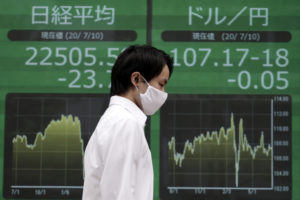MANILA, Philippines — The Bangko Sentral ng Pilipinas (BSP) expects the country’s dollar reserves to remain robust in the near term with exports, remittances, and investments rebounding amid the gradual opening of business sectors across the globe.
In a press briefing on Tuesday, BSP Governor Benjamin Diokno added that it is likely for the gross International reserves — already at their highest level in Philippine history as of the latest data — to top the $100-billion mark before the year ends.
“The [dollar reserves’] historic high level can be attributed essentially to effective reserves management by the central bank and the sustained net inflow of foreign exchange resulting from surpluses in external transactions,” he said.
From only $3.2 billion in 1980, the Philippines’ stash of foreign currency held by the central bank rose steadily during the last 40 years to reach an all-time high of $98.6 billion in July this year.
The July 2020 figure is equivalent to 8.9 months’ worth of imports of goods and payments of services and primary income. It is also about 7.6 times the country’s short-term external debt based on original maturity and 4.9 times based on residual maturity.
Factors that contributed to the recent rise in the dollar reserves are higher revaluation gains on BSP gold holdings from rising gold and bond prices; BSP’s foreign exchange operations; and the national government’s foreign currency deposits with the central bank from its borrowings to finance funding requirements, including for COVID-19 response.
Diokno said that a further increase in the country’s dollar reserves will also be made possible by the central bank’s recent decision to actively participate in the gold trading market, given the rise in the price of the precious metal to historic highs.
He explained that the Monetary Board decided to shift from passive to active trading largely because of the change in the price dynamics of gold.
Previously, the price of gold stood at around $1,400 per ounce, but has since risen to $2,000 per ounce.
The amended central bank law also made BSP gold purchases from small miners more attractive.
The BSP notes that the latest dollar reserve level continued to represent an ample liquidity buffer that cushions the domestic economy against external headwinds such as the global financial crisis and the current coronavirus pandemic.
“The dollar reserve level also improves the country’s creditworthiness and provides confidence as an additional buffer against external economic and financial shocks amid an uncertain global economic environment,” Diokno said.
Like most central banks, the BSP holds international reserves to provide a standby supply of foreign exchange for instances when dollar holdings of domestic commercial banks temporarily fall short of the total demand from the private sector and the national government.


